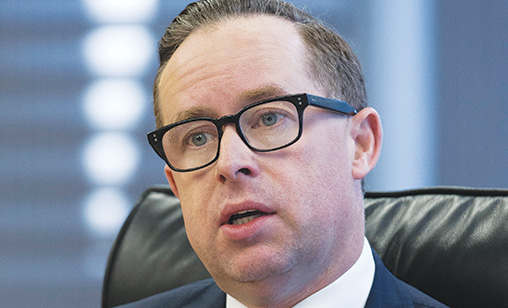News Backgrounder
Flying into the sun
Qantas Airways’ Project Sunrise, the barrier-breaking plan to link Sydney and Melbourne non-stop with London has grabbed attention worldwide, but its launch is not set in stone, reports associate editor and chief correspondent, Tom Ballantyne.
July 1st 2019
There is little doubt Qantas Airways group CEO, Alan Joyce, is enthusiastic about breaking through one of commercial aviation’s final barriers: linking eastern seaboard Australia with the UK non-stop. Read More » But he is also pragmatic. The 21-hour flight won’t be launched in 2023 if the figures don’t add up.
“When you are doing a CEO job like this, which I have been doing for a long time, you have to know when to say ‘no’ as well,” he said “And don’t worry about it. If the business case does not work and we don’t get the right commercial vehicle from Boeing or Airbus and we don’t get the right deal from the pilots and we can’t get over the commercial hurdles, we will be ruthless.
 |
“It’s our shareholders money and it’s going to be billions of dollars. If I am not convinced and senior management is not convinced that this is going to work, we will have no problem in killing the project.”
Joyce said good progress is being made, particularly since its non-stop Perth-London 787 flights, which have been operating for more than a year, have been successful.
“We have not made money on Sydney-London for ten years. Perth-London was profitable from day one,” Joyce said.
“Because of the success of this, we think Project Sunrise has the potential, but we are still working on it. This is a game changer. The last frontier in aviation is to do Melbourne and Sydney to London non-stop which is, I think, the limits of what anyone wants in aviation. Both the manufacturers are calling this the moonshot. They are very keen and very eager to win.”
Joyce has had “very good discussions” with both Airbus and Boeing.
“We are issuing a request for a final offer and the intention is by August to have the results of that back. Hopefully, this will get us to a stage with the manufacturers on the price of the aircraft, the guarantees on the aircraft, which is fuel burn and maintenance costs, and guarantees on performance and reliability because we are flying these aircraft on very long sectors. We need to get that right. It is very important.”
Airbus and Boeing are protecting order slots for 2022 and 2023 and if the decision is to go ahead Qantas will place an order before year end with a view to beginning flights in 2023.
There are several key issues to be settled. Joyce described payload currently as “a moving feast” that was evolving as the manufacturers tested and defined the aircraft.
The payload shortage varies on different aircraft. There will be no freight on flights to London and there will be a loss of seats. The space will be used to provide a zone for Economy passengers to exercise, stretch and hydrate during the 21-hour journey. There will be enough room in the first and business cabins for passengers to do the same without the need to define a separate zone.
Another critical element to pressing the go button is achieving a deal with the carrier’s pilots. At present, cockpit crew cannot be on duty for longer than 20 hours, which is less than the 23 hours, including time before and after the flight, required for Sydney-London flights.
Regulators will need to be convinced crewing rosters will not lead to pilot fatigue and therefore be a threat to safety. “We are saying the current arrangement [with pilots] does not work so we need an efficiency change,” Joyce said.
“These aircraft will create a huge amount of promotions. A first officer typically is paid 55% of a captain’s salary and the biggest thing a pilot can want is growth of an airline.
“Sunrise means massive growth for us and it would create a very fast promotional opportunity for a lot of pilots. They have to look at how they will miss that opportunity if they don’t give the productivity needed on the aircraft.
“The best thing we can all do for the success of Qantas long term is to have a pilot agreement, the manufacturers to give the right price and do to this.
“It is a commercial risk. It is an exciting risk. I think it will work.
“We have said that when you look at where Sunrise works, London is a massive market.
“If you look at Europe, Paris is number two and Germany is number three. We think we can make Melbourne and Sydney to London and potentially a service from the east coast [of Australia] to Paris and potentially from the east coast to Frankfurt. The other markets for Sunrise obviously are New York non-stop and Chicago non-stop and maybe another point on the east coast of the U.S. It opens up Sydney or Melbourne to Brazil which we can’t do today – Sao Paulo and Rio – and more flights directly into Africa.”